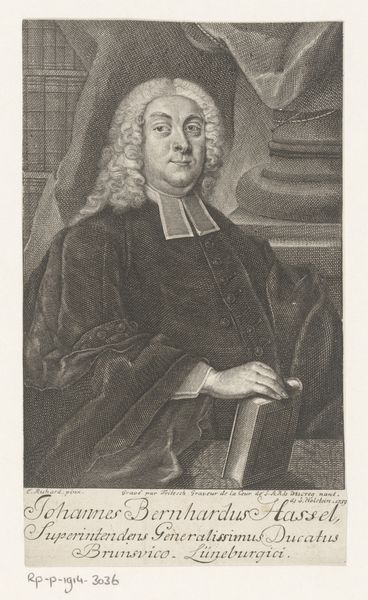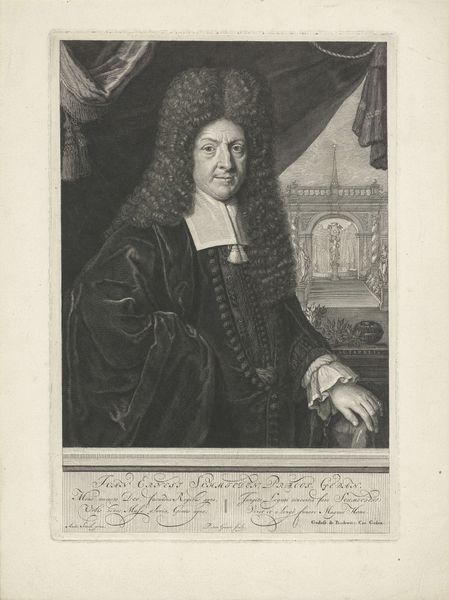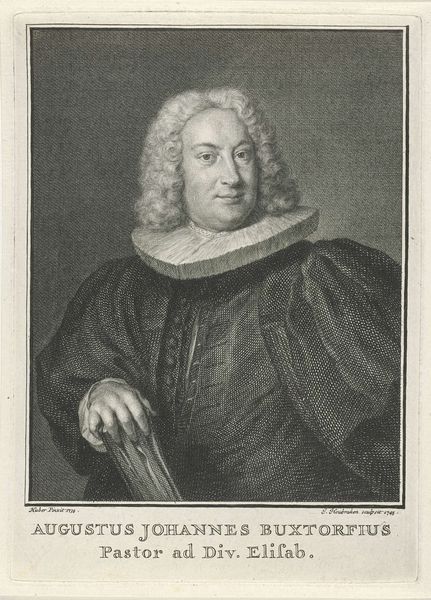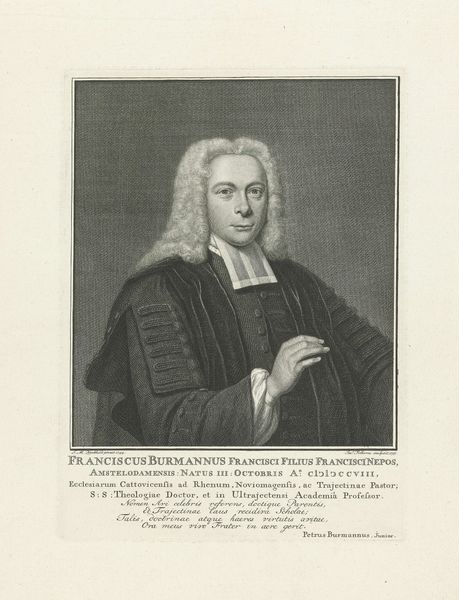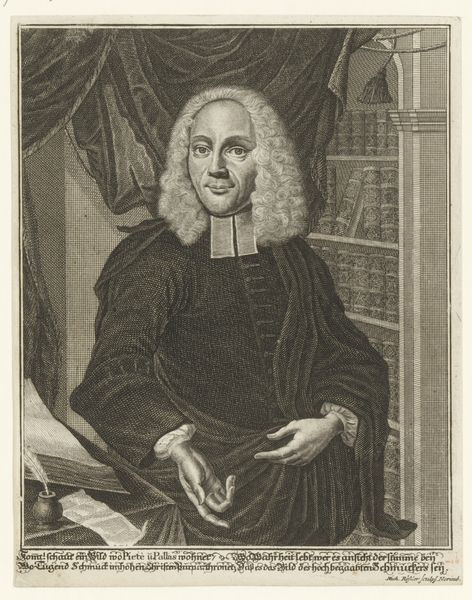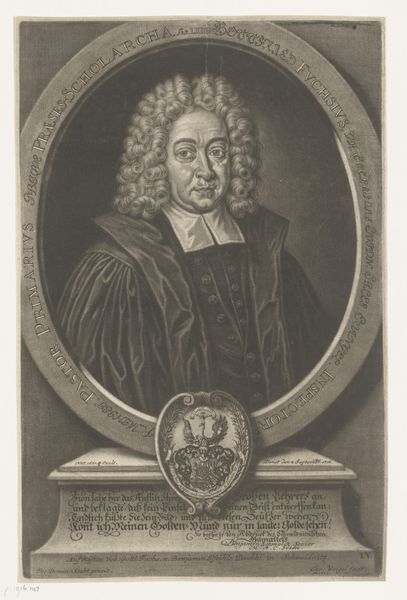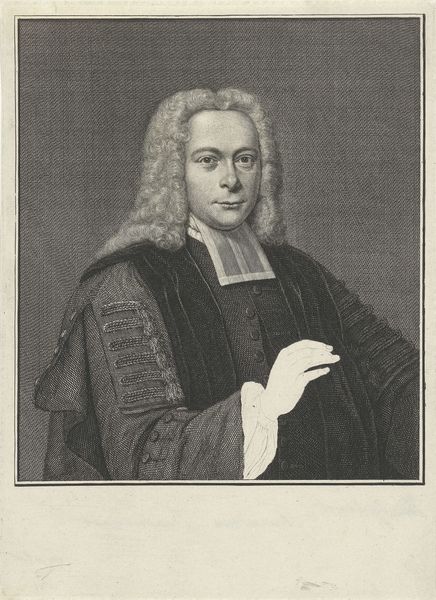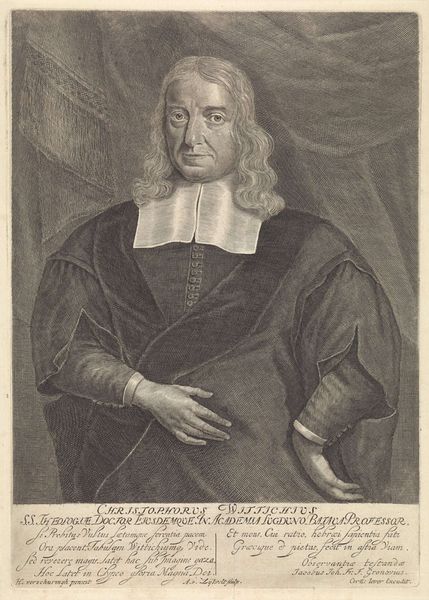
print, engraving
#
portrait
#
baroque
# print
#
history-painting
#
engraving
Dimensions: height 152 mm, width 94 mm
Copyright: Rijks Museum: Open Domain
Editor: So, this is a portrait of Peter Zorn, made sometime between 1705 and 1746 by Christian Fritzsch. It's an engraving, currently held at the Rijksmuseum. What immediately strikes me is the sitter's clothing; it speaks to a particular time and social class. What do you see in this piece? Curator: Well, considering this portrait was commissioned, or at least approved, by Zorn himself, the visual cues surrounding status and learning are paramount. Notice the book, likely a sacred text, the meticulous wig, and the academic gown. These weren't just aesthetic choices; they were carefully constructed signals intended to communicate Zorn’s authority as a professor of history and Greek. How might the broader academic climate of the period have influenced this imagery? Editor: I suppose the portrait would reinforce the importance of scholarship and learning. Was this image part of a broader movement or trend? Curator: Precisely! In the Baroque era, especially in academic and religious circles, portraiture became a vital tool for shaping public perception. Engravings, like this one, facilitated the wide dissemination of such images, extending the subject’s influence beyond their immediate physical presence. These portraits often served as visual endorsements of a specific intellectual tradition or theological viewpoint. Editor: So it’s less about individual artistic expression, and more about participating in a system of visual rhetoric? Curator: Absolutely! The politics of imagery in this period often revolved around asserting and maintaining institutional power. It would be useful to look into how this portrait functioned within the context of the Illustrious Carolinum Gymnasium and broader intellectual circles in Hamburg. What did this Gymnasium stand for, and who was its audience? Editor: Fascinating! I had never considered how portraits like this could be actively shaping intellectual landscapes. I'll definitely research the Gymnasium to see how Zorn fits within its public image. Thanks! Curator: Indeed. Examining these kinds of details illuminates how even seemingly straightforward portraits can be rich sources for understanding social and intellectual history.
Comments
No comments
Be the first to comment and join the conversation on the ultimate creative platform.
